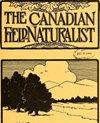海龟被公路撞死的热点每年都在变化吗?
Q4 Agricultural and Biological Sciences
引用次数: 0
摘要
淡水龟面临着许多威胁,但对许多物种来说,道路死亡是最严重的威胁之一。被公路撞死的海龟并不是均匀分布在道路上,而是集中在某些地区,称为热点地区。确定热点的一个关键问题是它们是固定的位置,还是由于移动模式的变化而每年都在变化。我们将一年、两年和三年的道路调查数据与四年调查的汇总数据进行了比较。我们在加拿大安大略省渥太华市15.5公里的路段进行了四年的73次调查,发现了254只海龟。汇集数据的四年产生四个热点(“汇集热点”),而每年或每年的组合产生三到五个热点,其中四个与汇集的热点大致对应。一年、两年或三年的调查数据与汇集的热点之间的热点重叠的平均百分比从58.7%到88.9%不等。仅仅一年的调查有时会遗漏一个汇集热点,低估了汇集热点的空间范围,有时还会产生额外的“临时”热点。两年的调查总体上较好地估计了汇集的热点,并较好地确定了这些热点的空间范围。本文章由计算机程序翻译,如有差异,请以英文原文为准。
Do turtle roadkill hotspots shift from year to year?
Freshwater turtles face many threats but roadkill is one of the most serious for many species. Roadkill of turtles is not uniformly distributed across roads but aggregated in certain areas, termed hotspots. A key question in identifying hotspots is whether they are fixed locations or if they shift from year to year because of changes in movement patterns. We compared how one, two, and three years of road survey data compared with the pooled data from four years of surveys. We found 254 turtles during 73 surveys during four years along a 15.5 km road section in Ottawa, Ontario, Canada. The four years of pooled data produced four hotspots (“pooled hotspots”) while each year or combination of years produced from three to five hotspots, four of which approximately corresponded to the pooled hotspots. The average percentage overlap of hotspots between one, two, or three years of survey data and the pooled hotspots ranged from 58.7% to 88.9%. Just one year of surveys sometimes missed one of the pooled hotspots, underestimated the spatial extent of the pooled hotspots, and also sometimes produced an additional “temporary” hotspot. Two years of surveys generally produced better approximations of the pooled hotspots and better identified the spatial extent of those hotspots.
求助全文
通过发布文献求助,成功后即可免费获取论文全文。
去求助
来源期刊

The Canadian Field-Naturalist
Agricultural and Biological Sciences-Ecology, Evolution, Behavior and Systematics
CiteScore
0.60
自引率
0.00%
发文量
54
期刊介绍:
The Canadian Field-Naturalist (ISSN: 0008-3550) publishes scientific papers by amateur and professional naturalists and field biologists, reporting observations and results of investigations in any field of natural history, provided they are original, significant, and relevant to Canada.
 求助内容:
求助内容: 应助结果提醒方式:
应助结果提醒方式:


